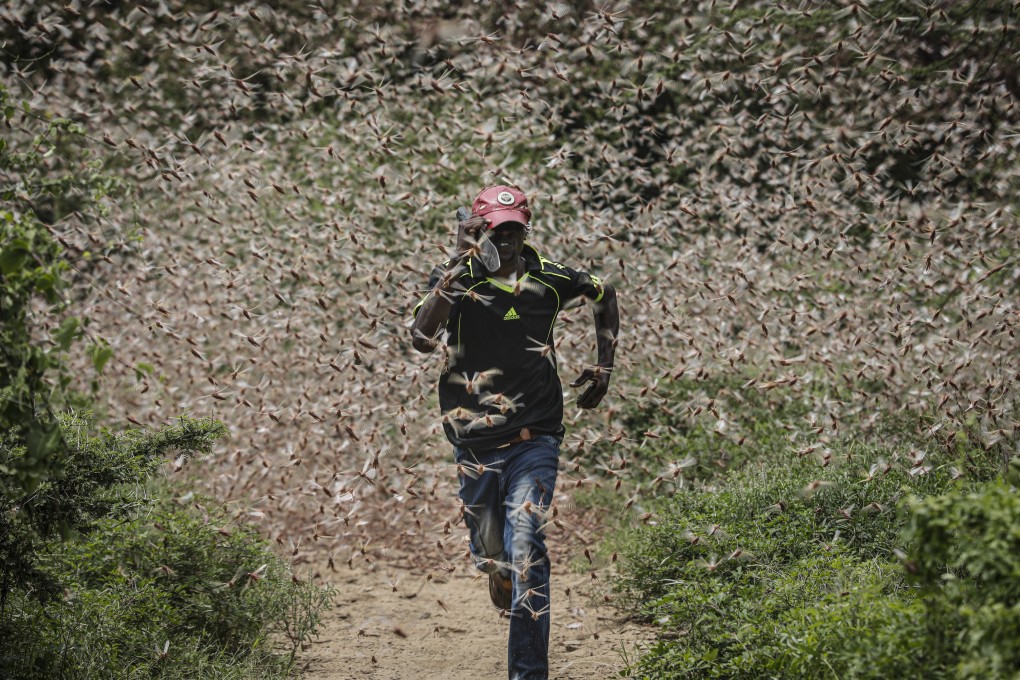Skies go black in Africa’s worst locust plague in decades
- Locust invasion is the biggest in Ethiopia and Somalia in 25 years, and the biggest in Kenya in 70 years
- A changing climate has contributed to ‘exceptional’ breeding conditions

The hum of millions of locusts on the move is broken by the screams of farmers and the clanging of pots and pans. But their noisemaking does little to stop the voracious insects from feasting on their crops in this rural community.
The worst outbreak of desert locusts in Kenya in 70 years has seen hundreds of millions of the bugs swarm into the East African nation from Somalia and Ethiopia. Those two countries have not had an infestation like this in a quarter-century, destroying farmland and threatening an already vulnerable region with devastating hunger.
“Even cows are wondering what is happening,“ said Ndunda Makanga, who spent hours Friday trying to chase the locusts from his farm.
“Corn, sorghum, cowpeas, they have eaten everything.”
When rains arrive in March and bring new vegetation across much of the region, the numbers of the fast-breeding locusts could grow 500 times before drier weather in June curbs their spread, the United Nations says.
“We must act immediately,” said David Phiri of the UN Food and Agricultural Organisation, as donors huddled in Kenya’s capital, Nairobi, where one expert had to reassure attendees at a press conference that the locust invasion was not a portent of the biblical “end of times”.
